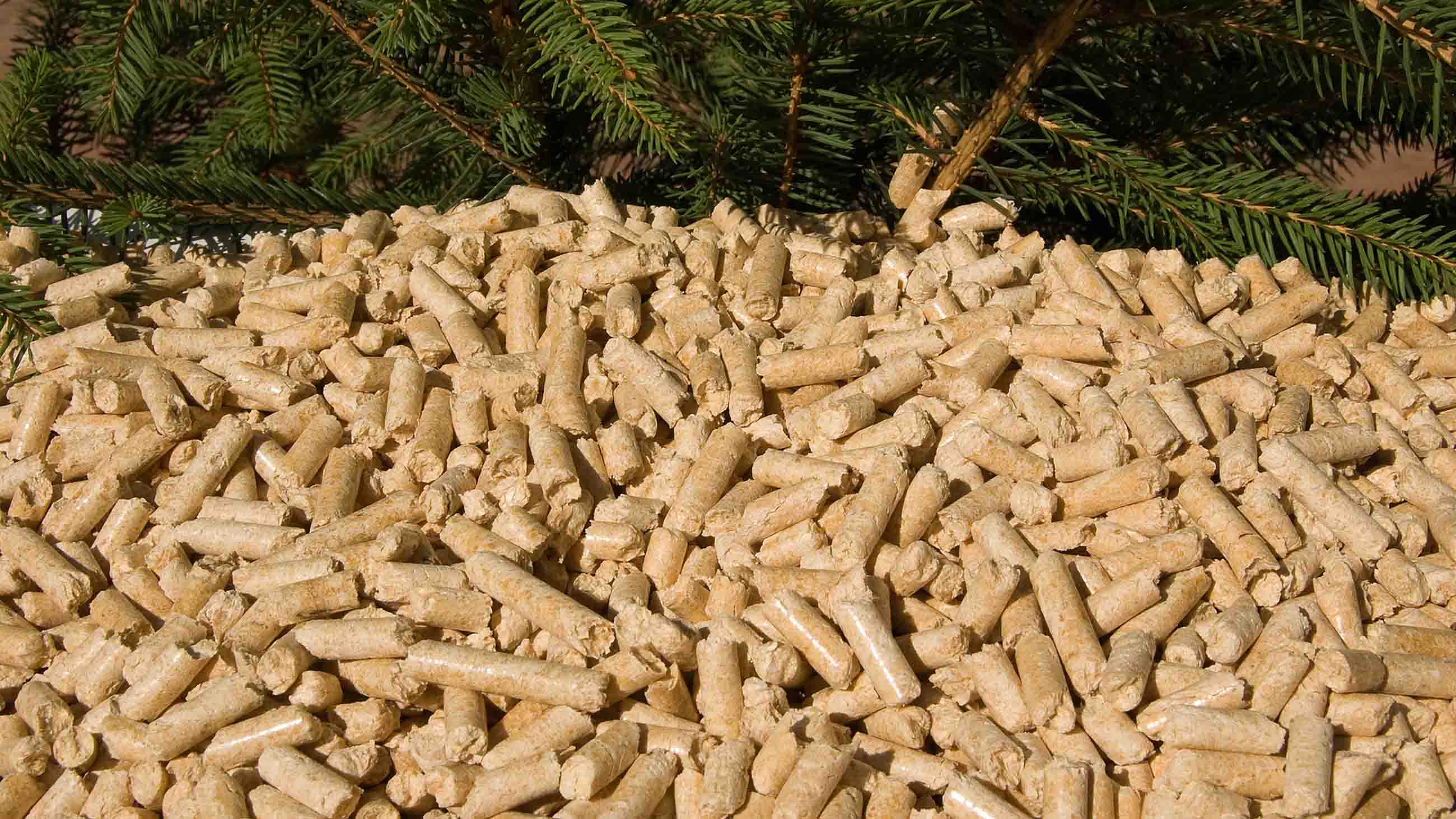The Forever Debate: Is Burning Wood for Electricity a Good Idea?
The idea that to generate electricity should be considered climate-friendly has been debated by scientists and politicians for years. Advocates, including many scientists, ask what could be more sustainable than burning trees? They drink in planet-warming gasses while growing, and give it back up when they are burned — a perfect closed loop with no net emissions. Critics, on the other hand — including other researchers — say the science is much more complicated than all that, and that when managed poorly, woody biomass power could be worse for the climate than coal.
Industry watchers are now wondering whether the election of President Donald J. Trump, who considers climate change to be unsettled science, will set the whole biomass debate aside, dooming the industry to irrelevance. There would be little reason to bother with wood, after all, if finding climate-friendly alternatives is no longer an imperative and coal and gas remain cheap and plentiful.
So what are the real prospects for woody biomass power going forward? The outlook is mixed.
Greg Walden, a timber-state Republican of Oregon, has now ascended to the chairmanship of the powerful House Energy and Commerce Committee, and he has long championed the idea of using so-called “woody biomass” fuel to meet climate protection goals. With his eastern Oregon district struggling to produce job growth, stakeholders on both sides suspect that he could provide the momentum necessary to declare wood-burning “carbon neutral” — a designation that could unleash the industry.
“If woody biomass has a champion, it’s Greg Walden,” said Myron Ebell, a long-time policy analyst with the conservative Competitive Enterprise Institute who recently led the Trump administration’s reorganization of the Environmental Protection Agency. “I would expect that the future for woody biomass is about as rosy as one could hope for given his critically important position in the Congress,” Ebell told Undark.
Of course, that guarantees nothing at this early stage, Ebell added. The scientific, economic and political barriers remain steep for woody biomass. And while opponents of the technology say they are ready to keep fighting, even industry representatives say the path forward over the next four years is far from clear. “We hope it has movement,” said Bob Cleaves, president and CEO of the Biomass Power Association, “but it’s really not clear what Congress is going to do.”
Last year, the industry reached its legislative high-water mark when a bipartisan group of senators inserted language an energy bill declaring woody biomass “carbon neutral.” That bill was eventually mothballed, but biomass still has strong proponents in both houses of Congress. These include the lead sponsor of that bill, Lisa Murkowski, the Republican senator from Alaska who heads the Senate Committee on Energy and Natural Resources. She again stated that she supports woody biomass power during her questioning of Trump’s pick to head the Department of Energy, former Texas Gov. Rick Perry.
Meanwhile, industry executives were hopeful that Trump, either directly or through indifference, would resolve the question of woody biomass’ climate-friendly credentials — an issue that the Obama administration wrestled with for most of his time in office without ever reaching a firm conclusion — in their favor. The basic idea, after all, sounds promising: Stop burning coal. Burn wood instead. Grow more trees. Let them soak up carbon dioxide. Repeat.
Utilities using wood as a feedstock can also produce power at any time, biomass advocates like to point out — unlike solar, which is useless at night, or wind power, which needs a steady breeze.
Still, many scientists are quick to counter that growing trees to absorb all that liberated carbon takes time — decades actually, and even a century in some cases. And while the planet waits for that benefit, all that wood being burned to boil water and turn power plant turbines releases carbon at a rate 50 percent higher than burning coal to produce the same amount of juice, according to the Partnership for Policy Integrity. The technology could have benefits, some researchers will admit, but only if strict rules are in place to ensure that cycles of growth and combustion are balanced, and greenhouse gas emissions are carefully tracked and accounted for every step of the way.
Those outcomes are far from assured — perhaps more so now than ever under Trump. The president’s only action so far in this arena was to take steps to eventually kill President Obama’s Clean Power Plan, which was designed to reduce greenhouse gases and, had it been implemented, would likely have benefited the woody biomass power industry. Killing the plan has hurt the industry’s prospects, and without any federal mandates to reduce greenhouse gases coming from power plants, there’s little incentive for utilities to look beyond coal and other fossil fuels.
Still, environmentalists opposed to woody biomass are keeping a close eye on Congress. “We’re gearing up for a fight on this,” said Sami Yassa, a senior scientist with the Natural Resources Defense Council. Yassa is convinced that any push for biomass support is now likely to move out of the legislative arena and into the appropriations process, where energy interests of all kinds will be busy lobbying for tax credits and other windfalls that can boost their fortunes — and where such largesse often sneaks through with little public scrutiny.
“Appropriations is where a lot of bad things just appear,” Yassa said.

For all the jockeying and girding on both sides of the woody biomass debate, what’s happening in Congress on this question may not prove all that important. Virtually all of the wood currently being converted in the U.S. into thumb-sized pellets — the traditional feedstock for biomass boilers — is shipped to Europe, where it is counted as carbon-neutral under European rules. Those rules, environmental advocates say, were put in place with little scientific foundation.
By comparison, the American market for burning wood for power is in a period of contraction, and if anything, it seems likely to continue shrinking with the elimination of the Clean Power Plan. Dozens of U.S. biomass plants have closed in recent years, sometimes sticking taxpayers millions of dollars in costs.
Biomass power’s outlook is also partly governed by competition from other electricity feedstocks, and right now conditions are not good for wood. The advent of fracking has made natural gas abundant and cheap, and the ability of natural-gas drillers to undercut the prices of other fossil fuels — chiefly coal — extends to alternative energy sources as well, including wind, solar, and biomass.
In a letter to Congress following last year’s Senate bill, dozens of scientists and other stakeholders pointed out the flaws inherent in declaring biomass, on its face, carbon neutral. Among other things, they argued that solar panels occupying the same space as a forest stand cleared for biomass power could produce 80 times as much electricity — without the emissions. The emissions associated with producing and transporting all that biomass, they added, negate as much as 25 percent of the presumed emissions benefit.
But other scientists argue that dismissing biomass out of hand is also a mistake, and that there are real upsides to including wood as part of a diverse energy mix. “Having robust energy markets adds value to the forest, which makes it less likely to be turned into something else,” said University of Florida forest economist Damian Adams, who was one of dozens of scientists to sign their own letter to Congress in support of carefully managed biomass in 2014. To Adams’ mind, keeping forests from being converted to row crops or shopping centers has climate value, too — but that won’t happen unless forests are made economically more valuable, which is something a healthy, properly regulated biomass market might do.
Still, it’s the regulation part of the equation that continues to keep skeptics wary, and so the tug-of-war over the future of woody biomass power continues.
“I’m not opposed to all burning of wood,” said Philip B. Duffy, a physicist and president of the climate-focused Woods Hole Research Center in Massachusetts. Duffy was the lead signatory of the most recent letter to Congress opposing a carbon-neutrality designation for woody biomass. “You have to do the analysis,” he told Undark. “And in every case there’s two issues: Emissions need to be counted. And they need to get accounted for as closely as possible to what the atmosphere actually sees.
“That’s not happening,” he added. “And that’s a problem.”
Robert McClure is executive director of InvestigateWest, a nonprofit newsroom in Seattle with a focus on the environment, public health, and government accountability. He is currently a 2016-17 Knight Science Journalism fellow at MIT.











Comments are automatically closed one year after article publication. Archived comments are below.
For a thorough look at biomass as a climate neutral, even positive, source of carbon, we in the U.S. need to look at Sweden and Finland. Thanks to Sweden’s hefty fossil carbon tax since 1991, they have a very experienced and innovative forest and biomass sector. Since 1901 they have had a tree replanting law. Now the norm is 3 for each tree harvested.
Far more than simply providing some efficient electricity generation in combined heating and power plants (for this purpose only branches and tops of trees are used), they have invented new clean auto and truck fuels from wood waste products from sawmills and pulp & paper plants – their largest fuel company will be fossil free by 2030. That’s the same date their domestic air traffic aims to be off fossil fuel. That’s still only the beginning. More and more apartment buildings are being built only from wood because it is cheaper, faster and stores carbon – unlike concrete. Having broken the chemical sugar chain down, the race is on to transform Sweden into a full-fledged bioeconomy.
“Anything you can do with oil, you can do with wood.” That’s the new mantra. Plastics, clothing, transparent glazing for solar panels, even kevlar vests for police. The potential for carbon substitution is staggering, already more than Sweden’s dwindling fossil emissions, which already are negated by the annual forest sequestration of carbon (which Swedes don’t count in their accounting). All because the price of fossil carbon has encouraged science and engineering to explore forestry and biomass, knowing markets would likely emerge (because of that climate thing that everybody agrees is a problem…)
That’s a real intersection of science and society. Maybe intersection is the wrong word. Swedes love traffic circles instead of intersections. Science is not a confrontation with society. It’s a flow. I can’t imagine Swedish scientists needing to march on Stockholm to garner respect for knowledge. And for a prime minister to doubt the science, that is 100% impossible. After all, fully 3 months before Jim Hansen famously testified before Congress about global warming, Bert Bolin, who was about to become the founding chair of the IPCC, penned an op-ed in a Swedish daily that summed up climate science to date and suggested it was time to consider a tax on fossil fuels. The politicians listened. Two years later Sweden enacted their tax. Jim Hansen is still calling for one. And our political leaders?
As the article points out, we still have a fight on our hands when it comes to biomass (and apparently the Paris Accord). We need to do analysis, debate, figure out the accounting, somehow try to convince forest owners – like those Koch brothers with their Georgia Pacific – not to simply burn the money growing on trees. Or we could save a lot of time and just ask the Swedes.
Excellent article
The challenge is to run the facilities as effectively as possible. The technologies that we have developed not only reduce emissions at the source but also give a greater return by achieving a higher output per ton of fuel. The challenge of running a biomass power plant are many but it can be done efficiently and economically.
We all want a clean environment while not giving up any of our modern conveniences. This includes driving our cars, taking trips on aircraft and heating or cooling our homes.
If done responsibly this can be achieved.
Planting trees and green spaces are the most effective way that we currently have of carbon sequestering. Its not a one shot fix all but a component toward a more effective collaboration with the environment.